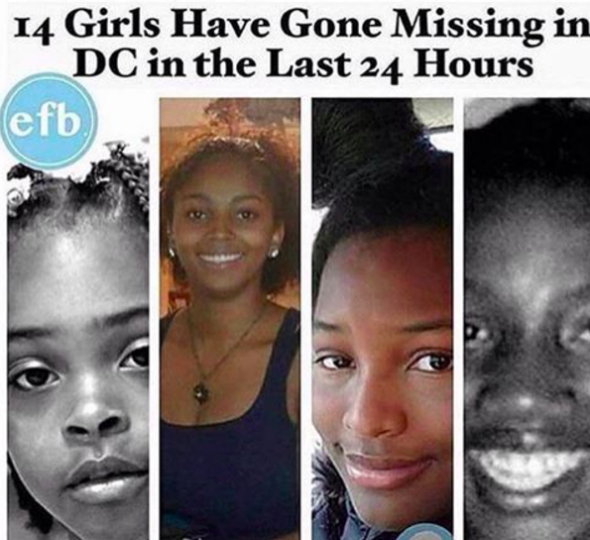Two black members of Congress have asked the Justice Department to look into a spate of missing-child reports in the Washington, D.C. area. In a letter sent Tuesday to Attorney General Jeff Sessions and FBI Director James Comey, Congressional Black Caucus chairman Cedric Richmond of Louisiana and Eleanor Holmes Norton (D.C.’s nonvoting delegate) asked the agencies to “determine whether these developments are an anomaly or whether they are indicative of an underlying trend that must be addressed.”
The Associated Press reports that 501 predominately black and Latino minors have gone missing in D.C. since the start of 2017; as of Wednesday, 22 of the cases were still open. Many of the cases have been getting a surge of attention in the past week on social media, where users are using the hashtag #missingdcgirls to demand results from the D.C. police force and condemn news outlets for not giving due notice to the story.
To some, the social media push has made it seem like there’s been an alarming spike in black teen girls gone missing in D.C., leading them to wonder about a sudden failure of city services to keep girls safe. Celebrities, including Ava DuVernay, Sophia Bush, LL Cool J, and Zendaya, are tweeting about the missing girls. Others, like Michael Flynn Jr.—the son of Donald Trump’s disgraced ex–national security advisor Michael Flynn—are using the story to accuse D.C. law enforcement of ignoring conspiracy theories about a child-trafficking ring at a pizza place.
But D.C.’s Metropolitan Police Department insists that there has been no increase in missing-person reports lately—in fact, the rate of reports is lower than usual. WUSA9 cites MPD statistics that say an average of 200 missing-person reports have been filed each month over the past five years, 99 percent of which have been closed. In 2017, an average of 190 cases have been opened each month.
According to MPD, the increased awareness of missing teens in D.C. has more to do with a new police strategy than any rise in teens going missing. MPD has been posting missing-person cases on social media more frequently in recent months in an effort to spread the word to more people in the area. In MPD’s estimation, all the “why isn’t anyone paying attention to this” posts are signs that their tactic is working.
But many social media posts parrot misinformation, leaving viewers with a skewed picture of what’s going on. One of the most common posts is this Instagram image, which claims that 14 girls went missing from D.C. in a 24-hour period. The post is misleading for a few reasons. NBC Washington confirmed with MPD that no 24-hour period in recent weeks saw 14 girls go missing, and that since March 19, MPD has publicized 20 missing-person reports on Twitter. Ten of those people were juveniles, and six of those juveniles have since been found. The viral Instagram post also includes a photo of Relisha Rudd, on the far left, an 8-year-old girl who went missing from the D.C. homeless shelter where she lived in 2014. Rudd was never found, and is presumed dead by police; a janitor from her shelter was found dead of suicide, and his wife found killed, months after Rudd disappeared.
Regardless of the specific facts and non-facts circulating on social media, it’s true that girls run away more often than boys, and children of color go missing more often than white children, though missing white kids get far more media attention than black and Latina ones. According to the Black and Missing Foundation, more than a third of missing U.S. children are black, and they’re often deemed runaways instead of “missing” at first. Natalie Wilson, Black and Missing’s co-founder, told Essence that the disparate treatment of white missing people and missing people of color means the latter get less public attention, and thus fewer people looking out for them. “Black women and girls are going missing and it’s not just in Washington D.C.,” she said. “It’s happening in Chicago, Baltimore, Detroit, Atlanta and other urban areas around the country.”
